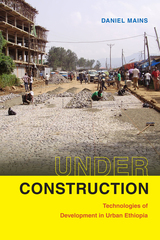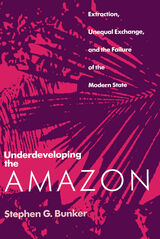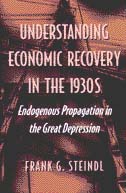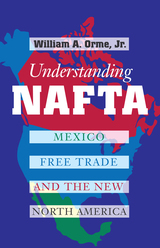317 books about Economic policy and 6
start with U
317 books about Economic policy and 6
317 books about Economic policy
6 start with U start with U
6 start with U start with U

Unavoidable Industrial Restructuring in Latin America
Fernando Fajnzylber
Duke University Press, 1990
In the recent economic history of Latin America no country has yet found the means to combine effectively economic growth with equity. Unavoidable Industrial Restructuring in Latin America compares the development path of Latin America with that of the East Asian newly industrialized countries (NICs), the United States, and Europe in the 1970s and 1980s to show the national policies and international cooperation necessary to set Latin American countries on the road to healthy economies.
Fernando Fajnzylber argues that technological and industrial progress is the driving force of a positive relationship among dynamism, competitiveness, austerity, and equity. Latin America’s failure to master this technological progress underlies its economic difficulties. To overcome the inheritance of past mistakes, the author maintains, Latin America must undergo not only macroeconomic stabilization and a reduction of the debt burden, but also a complete transformation of the production structure. The role of the state and the institutional setup need to be modified and new social and sectoral policies devised. Fajnzylber sees this radical restructuring as an unavoidable step if Latin America is ever to achieve a workable balance between growth and equity.
Fernando Fajnzylber argues that technological and industrial progress is the driving force of a positive relationship among dynamism, competitiveness, austerity, and equity. Latin America’s failure to master this technological progress underlies its economic difficulties. To overcome the inheritance of past mistakes, the author maintains, Latin America must undergo not only macroeconomic stabilization and a reduction of the debt burden, but also a complete transformation of the production structure. The role of the state and the institutional setup need to be modified and new social and sectoral policies devised. Fajnzylber sees this radical restructuring as an unavoidable step if Latin America is ever to achieve a workable balance between growth and equity.
[more]

Under Construction
Technologies of Development in Urban Ethiopia
Daniel Mains
Duke University Press, 2019
Over the past decade, Ethiopia has had one of the world's fastest growing economies, largely due to its investments in infrastructure, and it is through building dams, roads, and other infrastructure that the Ethiopian state seeks to become a middle-income country by 2025. Yet most urban Ethiopians struggle to meet their daily needs and actively oppose a ruling party that they associate with corruption and mismanagement. In Under Construction Daniel Mains explores the intersection of development and governance by examining the conflicts surrounding the construction of specific infrastructural technologies: asphalt and cobblestone roads, motorcycle taxis, and hydroelectric dams. These projects serve as sites for nation building and the means for the state to assert its legitimacy. The construction process—as well as Ethiopians' experience of living with the disruption of construction zones—reveals the tension and conflict between the promise of progress and the possibility of failure. Mains demonstrates how infrastructures as both ethnographic sites and as a means of theorizing such concepts as progress, development, and the state offer a valuable contrast to accounts of African abjection and decline.
[more]

Underdeveloping the Amazon
Extraction, Unequal Exchange, and the Failure of the Modern State
Stephen G. Bunker
University of Chicago Press, 1988
Underdeveloping the Amazon shows how different extractive economies have periodically enriched various dominant classes but progressively impoverished the entire region by disrupting both the Amazon Basin's ecology and human communities. Contending that traditional models of development based almost exclusively on the European and American experience of industrial production cannot apply to a regional economy founded on extraction, Stephen G. Bunker proposes a new model based on the use and depletion of energy values in natural resources as the key to understanding the disruptive forces at work in the Basin.
[more]

Understanding Economic Recovery in the 1930s
Endogenous Propagation in the Great Depression
Frank G. Steindl
University of Michigan Press, 2003
Although much has been published about the economic downturn that began in mid-1929, very little has been written about the recovery from this cataclysmic period. Long, tortuous, and uneven as it was, there was indeed a recovery. In this important book, Steindl explores the much-neglected topic of the recovery, concentrating in particular on the macroeconomic developments responsible for the move back to a pre-Depression level economy.
Providing strong evidence for the role of the quantity of money in the revitalization, the author ultimately concludes that the seemingly robust monetary explanation of the recovery is deficient, as is any that relies principally on aggregate demand impulses. An accurate understanding of this phenomenon must account for the inherent tendency of the economy to revert to its long-run high employment trend.
Frank G. Steindl is Regents Professor of Economics and Ardmore Professor of Business Administration, Oklahoma State University.
Providing strong evidence for the role of the quantity of money in the revitalization, the author ultimately concludes that the seemingly robust monetary explanation of the recovery is deficient, as is any that relies principally on aggregate demand impulses. An accurate understanding of this phenomenon must account for the inherent tendency of the economy to revert to its long-run high employment trend.
Frank G. Steindl is Regents Professor of Economics and Ardmore Professor of Business Administration, Oklahoma State University.
[more]

Understanding NAFTA
Mexico, Free Trade, and the New North America
By William A. Orme, Jr.
University of Texas Press, 1996
Understanding NAFTA was first published in 1993 as Continental Shift: Free Trade & the New North America. This edition includes a new introduction that brings the NAFTA story up through 1995.
[more]

Urban Inequality
Evidence From Four Cities
Alice O'Connor
Russell Sage Foundation, 2001
Despite today's booming economy, secure work and upward mobility remain out of reach for many central-city residents. Urban Inequality presents an authoritative new look at the racial and economic divisions that continue to beset our nation's cities. Drawing upon a landmark survey of employers and households in four U.S. metropolises, Atlanta, Boston, Detroit, and Los Angeles, the study links both sides of the labor market, inquiring into the job requirements and hiring procedures of employers, as well as the skills, housing situation, and job search strategies of workers. Using this wealth of evidence, the authors discuss the merits of rival explanations of urban inequality. Do racial minorities lack the skills and education demanded by employers in today's global economy? Have the jobs best matched to the skills of inner-city workers moved to outlying suburbs? Or is inequality the result of racial discrimination in hiring, pay, and housing? Each of these explanations may provide part of the story, and the authors shed new light on the links between labor market disadvantage, residential segregation, and exclusionary racial attitudes. In each of the four cities, old industries have declined and new commercial centers have sprung up outside the traditional city limits, while new immigrant groups have entered all levels of the labor market. Despite these transformations, longstanding hostilities and lines of segregation between racial and ethnic communities are still apparent in each city. This book reveals how the disadvantaged position of many minority workers is compounded by racial antipathies and stereotypes that count against them in their search for housing and jobs. Until now, there has been little agreement on the sources of urban disadvantage and no convincing way of adjudicating between rival theories. Urban Inequality aims to advance our understanding of the causes of urban inequality as a first step toward ensuring that the nation's cities can prosper in the future without leaving their minority residents further behind. A Volume in the Multi-City Study of Urban Inequality
[more]
READERS
Browse our collection.
PUBLISHERS
See BiblioVault's publisher services.
STUDENT SERVICES
Files for college accessibility offices.
UChicago Accessibility Resources
home | accessibility | search | about | contact us
BiblioVault ® 2001 - 2024
The University of Chicago Press









